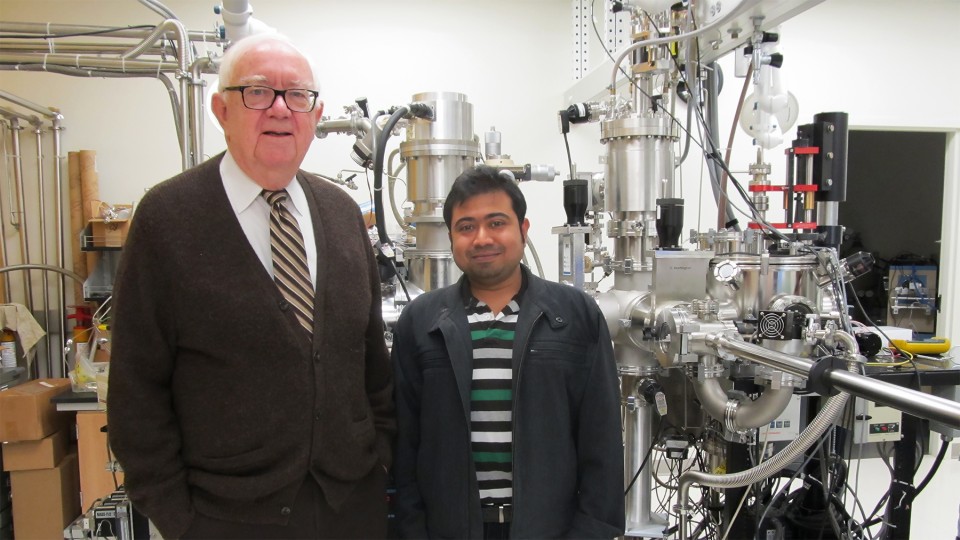· 2 min read
Team finds unexpected magnetism in nanoscale compound

A research team led by University of Nebraska-Lincoln physicists David Sellmyer and Bhaskar Das has discovered that a compound called manganese silicide takes on unexpected properties when reduced down to the nanoscale. (That’s the scale used to measure DNA strands, viruses and the length your fingernails grow in one second.)
What sorts of properties did the researchers find?
The big one is ferromagnetism. This basically means that clusters of these nanoparticles are especially susceptible to becoming magnetized when subjected to a magnetic field. It also means that they can retain their magnetism even after the magnetic field has been removed, as long as their temperature doesn’t rise above the so-called Curie point. The Husker team found that the Curie point for nanoscale manganese silicide is about 600 degrees Kelvin (476 degrees Fahrenheit).
“The unique aspect of this work is that is shows how the surface atoms in 8.6-nanometer (manganese silicide) clusters develop large magnetic moments which interact with core or interior electrons to greatly strengthen the ordered magnetic state,” Sellmyer said.
Why is that useful?
Magnetic materials play a crucial role in data-storage devices that rely on random-access memory, which stores its binary language of 1s and 0s in patterns of magnetization that can be read and rewritten by computer processors. Finding materials that feature ferromagnetism at ever-smaller scales and ever-higher temperatures helps facilitate the creation of more efficient digital technologies.
According to Sellmyer, the nanoclusters might also prove useful in biomedical imaging – think MRIs or PET scans – and as catalysts that accelerate chemical reactions essential in producing other compounds, processing energy sources, and much more.
How did the researchers figure this out?
Through a combination of experiments conducted at the Nebraska Center for Materials and Nanoscience and theoretical computations performed at the university’s Holland Computing Center.
Where can I learn more?
For all the details, check out the team’s recent study in the journal ACS Nano Letters by clicking here.
The team’s research was supported by the Office of Basic Energy Sciences at the U.S. Department of Energy.







